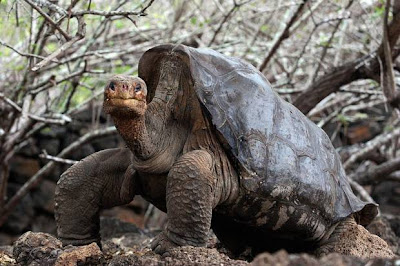"Strangely, not only has it forgotten how to fly, it also seems to have forgotten that it has forgotten how to fly. Legend has it that a seriously worried kakapo will sometimes run up a tree and jump out of it, whereupon it flies like a brick and lands in a graceless heap on the ground. It may also be the longest-lived bird in the world, with a suspected life expectancy of about 90 years. None of the kakapos known to scientists have yet died of old age and the chances are that some of the youngsters will out-live the people who are studying them. Perhaps this is because they seem to do everything more slowly than other birds: they are the Amazonian manatees of the bird world."Also called an owl parrot or a night parrot (it is nocturnal), the kākāpō camouflages itself with its moss-green feathers, which are exceptionally soft. Although both sexes are robust (despite being vegetarian), females are smaller than males, which can weigh up to 9lbs. It has a mating behavior unique among parrots, but the object of its affections can be a human's head as easily as another bird's nether regions: "Saving the kakapo faced several hurdles – the slow-breeding bird was often hand-reared and sometimes tried to mate with their handlers – forcing rangers to wear rubber helmets dotted with dimples to try to collect kakapo sperm." This I had to see! And here's the example I found:
"Shagged by a rare parrot"
Last Chance To See
BBC
__________
Selected previous posts about birds:












































